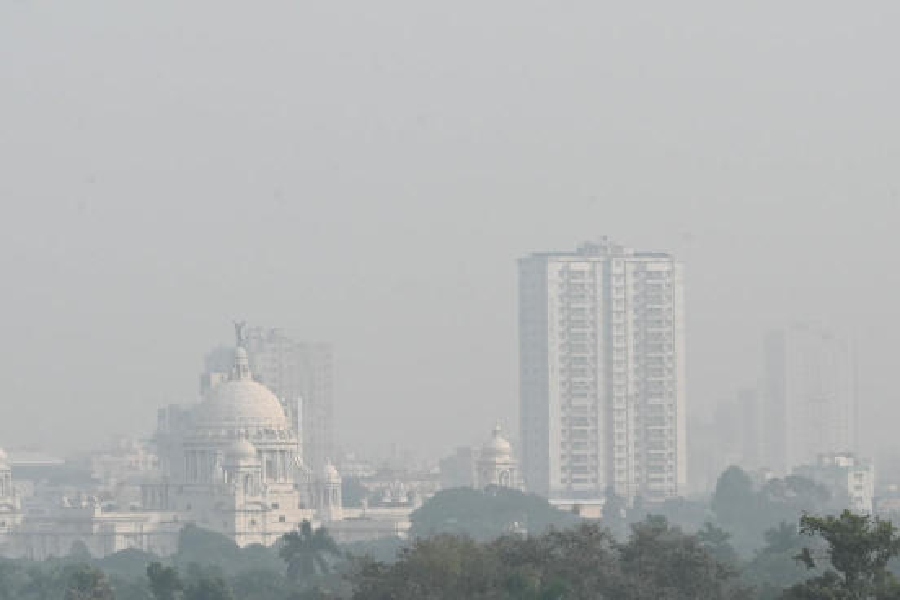The state pollution control board has hired The Energy and Resources Institute (TERI) to do a source apportionment study on air pollution in Kolkata and Howrah, a survey that will give an estimate of what contributes how much to the city’s air pollution.
Source apportionment study is the method of assessing the relative contribution of pollution sources to particulate matter in the air.
It will give a researched estimate of how much a sector — transport, industry or waste burning, among others — is contributing in terms of percentage to the PM2.5 and PM10, two most deadly air pollutants, in the ambient air.
Particulates that are less than 2.5 micron in size are called PM2.5, while those that are between 2.5 and 10 micron are called PM10.
TERI did the same study for Delhi, which was released in 2018.
The National Environmental Engineering Research Institute (NEERI) had in 2017-18 done a source apportionment study for Kolkata and Howrah. The report was submitted in 2019.
The study found that vehicles contributed 25 per cent of PM2.5 in Kolkata’s air during winter, secondary aerosols contributed 32 per cent, wood combustion contributed 15 per cent and coal burning 9 per cent.
In Howrah, vehicles accounted for 31 per cent of PM2.5, secondary aerosols 27 per cent, and wood and coal combustion 11 per cent each.
Secondary aerosols, also called secondary particles, are pollutants that are formed when gases emitted by human activities or naturally react in the air.
Air quality management experts said it would be good to have new data as some time has passed since the last study.
The cities in Bengal where the air quality was found to be poorer than permissible levels have taken some actions in the last few years. “New data will show how much impact these actions have had in improving air quality,” said an expert.
Of the 131 cities across India identified as “non-attainment” cities under the National Clean Air Programme, Bengal has six — Kolkata, Howrah, Asansol-Raniganj, Durgapur, Haldia and Barrackpore.
Non-attainment cities are those that have failed to attain the National Ambient Air Quality Standards over a five-year period.
“We have hired TERI for the source apportionment study. They will also do an environment carrying capacity assessment. The work has been going on for quite some time. TERI will submit its report in the middle of 2024,” said a PCB official.
Arindam Datta, a senior fellow at TERI and member of the team involved in the study, said the source apportionment survey has been undertaken in the Kolkata municipal area and 10km beyond its boundary.
Which means the entire Howrah city, Andul, Hind Motor, Konnagar, Dankuni, Sonarpur, Maheshtala, Basanti and Titagarh are among the places that have been included in the study.
“Our study will focus on the local sources of pollution as well pollution coming from beyond. We will study the pollution in Kolkata and also assess how much of it is coming from beyond the Kolkata municipal area,” said Datta.
If the contribution of pollution from areas in the immediate vicinity of Kolkata is known, the state government can involve more agencies under it in the fight against foul air.
“If it is found that places in the Kolkata metropolitan area are responsible for a significant portion of the city’s air pollution, the state can ask the Kolkata Metropolitan Development Authority (KMDA) and neighbouring municipalities to take corrective measures,” said Dutta.
The Kolkata metropolitan area includes Kolkata as well as towns in adjacent districts.
If the study finds that some of the pollution is contributed by other states, then an effective strategy would have to be evolved in coordination with those states as well as the Centre.
The study will also create an emission inventory, which is an absolute weight of a pollutant generated.
